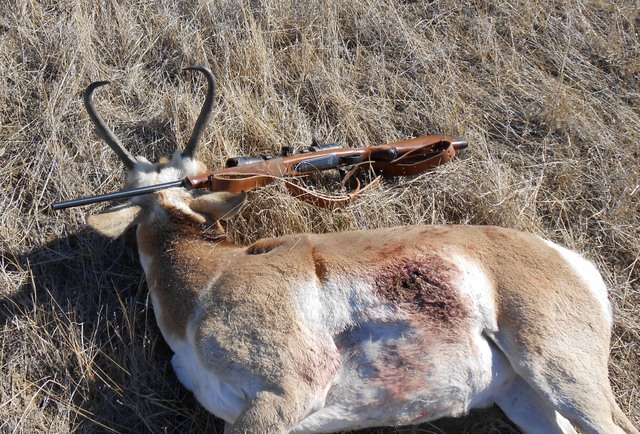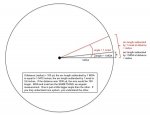I am wondreing still , do I want a mil scope or moa for long distance shooting?
Which is better, or more easily used ?
Which is better, or more easily used ?

Follow along with the video below to see how to install our site as a web app on your home screen.
Note: This feature may not be available in some browsers.
This topic has been discussed many, many times, if you search you will find tons of threads with answers to this question. Both mils and MOA work equally as well, I prefer mils since it is a decimal system vs franctions, but other than that there is no benefit to one system over the other.
Kirk R
Rob01 and Lowlight will tell you, a mil is a mil. It doesn't matter if it's 100yds or 1000yds whereas with an moa, at 100yds it's 1" and at 1000yds it's 10".
HUH???
A MOA is a MOA is a MOA. Both MOA and mill are angular measurements. A MOA is a minute of angle. A MOA is 1/60 of a degree. A mil is 1/1000 of a radian.
But both of them equal a certain LINEAR measurement at each given range. And that linear measurement increases linearly with range.
A mil is 10 cm at 100 meters. It is 20 cm at 200 meters, and 100 cm at 1000 meters.
And BTW, a true MOA is 1.047" at 100 yards.

Pick a horse and ride it.
I know what true MOA is, but thanks for your explanation for someone who may not understand. I also understand IPHY is 'inch per hundred yards', etc.
Perhaps this will explain it better, from Lowlight himself...

Sent from my iPad using Tapatalk

Thanks for that Lowlight. I am not afraid of making the switch to mils, its just easier to stick with what I already know. So how would I check my scope to see if it is true MOA?
Lets look at it another way;
I don't know of any one who makes MIL Palma type iron sights. If you shoot a 1000 yard match you'll probably shoot three 20 shot matches (4 if shooting a team match).
Any Rifle - Any Sight
Any Rifle - Iron Sight
Service Rifle
Most people use the same rifle in the first to matches. For example I have a Model 70 Target rifle I use for the two first matches. I use a Redfield Palma rear sight for the iron sights, its has 1/4 minute clicks. Then I throw on a scope for the Any Sight match. It wouldn't make any sense to switch to a Mil/Mil Scope. You get use to your wind calls in MOA, you know the scoring rings in inches so you can look into the spotting scope and adjust in 1/4 Min clicks. Why would you switch back and forth.
As to my math, I don't see where I'm that far off.
Let say you're shooting at an antelope at 300 yards. You are six inches high (not MOA but six inches) You have 1 MOA clicks, You have to come down 6 inches. One MOA is 3.141 inches per click at 300 yards (3 X 1.047 = 3.141). I need to come down 6 inches. So I come down two MOA Clicks. 2 X 3 is 6, and 2 X 3.141 is 6.282. So talking antelope, I'm going to be .282 inches below the center of the 8.5-9 inch vital (heart lung) area.
Why are we discussing iron sights? I thought this was a moa vs mil thread?
I don't know of any one who makes MIL Palma type iron sights. If you shoot a 1000 yard match you'll probably shoot three 20 shot matches (4 if shooting a team match).
Any Rifle - Any Sight
Any Rifle - Iron Sight
Service Rifle
Most people use the same rifle in the first to matches. For example I have a Model 70 Target rifle I use for the two first matches. I use a Redfield Palma rear sight for the iron sights, its has 1/4 minute clicks. Then I throw on a scope for the Any Sight match. It wouldn't make any sense to switch to a Mil/Mil Scope. You get use to your wind calls in MOA, you know the scoring rings in inches so you can look into the spotting scope and adjust in 1/4 Min clicks. Why would you switch back and forth.
"6 inches high" at 300 yards you know the difference between 6 inches and 9 inches 300 yards away ?
By reference to the size of a target. Knowing the range to the target. Knowing the drop from my zero of my round at 300 yards.
I just used 300 yards and 6 inches an example. The antelope I shot last year was 586, my rifle was sighted in for 250 yards which met I had to come up 9 MOA to hit the critter.
By the way I did use the Mil Dot to estimate the range (I came up with 600) actual measured via GPS was 586. It's a MIL/MOA scope. Close enough to keep it in the vital.
An animal is the same size regardless of the units used to measure it. You are confusing linear measurements with angular ones. It's as easy to 'come up' in Mils as it is in MOA, and maybe easier because there are fewer actual adjustments.Animals are inches tall, not MOA or MILs, but constant inches. It's easer for me to instantly convert inches to MOA (if I have to come up 6 inches because the critter is beyond my PBR, its easer to think MOA to get there which (I know 1.047) but for all practical purposes I can click in MOA figuring 1" per hundred yards.
What if you are a Mil shooter and are issued a Leupold M3A?Bryan is saying that in a sense of "calibration" not a sense that manufacturers are selling you a Mil Scope that is Rounded to something else... like they do with MOA. There is no SHOOTER MILS. But if a Manufacturer sells you on a TMOA Scope and you find you have IPHY or you work in MOA and have IPHY turrets, you have a big problem.
And by your guessing and over complicated math you could have shot its nipple off or damaged the spine. Kind of like those guys that go out and make head shots only on deer and they are off by .2 Mils....
They end up blowing the jaw off the animal and causing it to suffer.

An animal is the same size regardless of the units used to measure it. You are confusing linear measurements with angular ones. It's as easy to 'come up' in Mils as it is in MOA, and maybe easier because there are fewer actual adjustments.
That linear measurement is not in inches: It's the same measurement; whether in inches, centimeters or binary parsecs. That's the falsity at the core of the myth that MOA is more applicable. Proper technique requires not using 'inches of holdover'....an antelope is X inches tall regardless whether its 100 yards or 200 yards. But that liner measurement is in inches there fore its easer for me to used MOA which for practical hunting ranges or under 600 yards is 1 inch per hundred yards.
There is no difference, with regard to using a Mil or MOA system, between using proper technique when locating, ranging and shooting a target while hunting and during a match like the modern version of the 'Cup. That's one reason why PGS does so well at that match (the other reason is that he can read wind in a desert)....The MIL for ranging and the MOA for adjustments, because I think of my targets while hunting in inches.
Where as, in a match, such as the Sniper Hide Cup, a MIL/MIL scope would be better.
I agree with you that learning both systems is important. I disagree that Mils and MOA are different systems for different purposes. They are different systems derived for the same purpose....I never said one is better then the other, I said they are different and have different uses.
There is no difference, with regard to using a Mil or MOA system, between using proper technique when locating, ranging and shooting a target while hunting
That linear measurement is not in inches: It's the same measurement; whether in inches, centimeters or binary parsecs. That's the falsity at the core of the myth that MOA is more applicable.
Then again, if I'm shooting steel at verying distances, know and unknown, I like my MIL/MIL scope.
So lets move to shooting steel at distance, as in the precision rifle matches. I watch my impact through a MIL dot scope. Lets say I'm off one and one have MILS and want to adjust instead of favor to get on, it's simpler for me to move 1.5 MILs by clicking my .1 mil clicks 12-13 clicks. In this case FOR ME a MIL/MIL scope works better. The reasoning is I'm spotting my miss using the dots on my MIL dot scope. For me it would be faster to click in mils then to convert to inches and click that way. Unlike hunting where I view my targets in inches.
Unlike hunting where I view my targets in inches.

